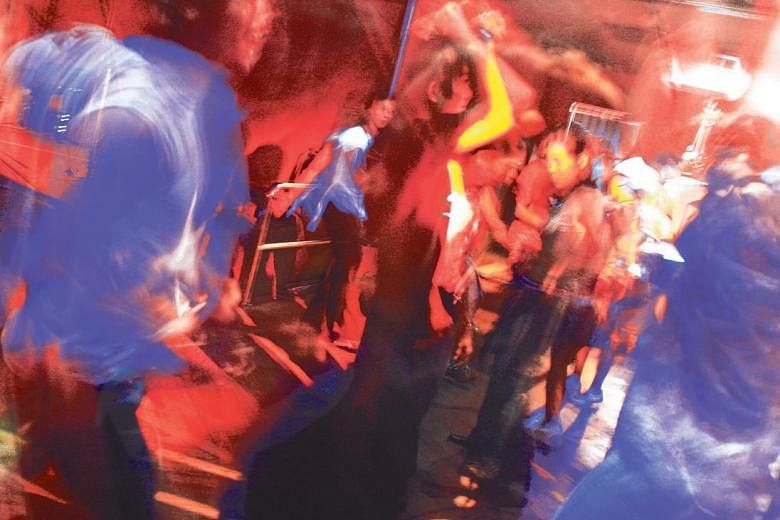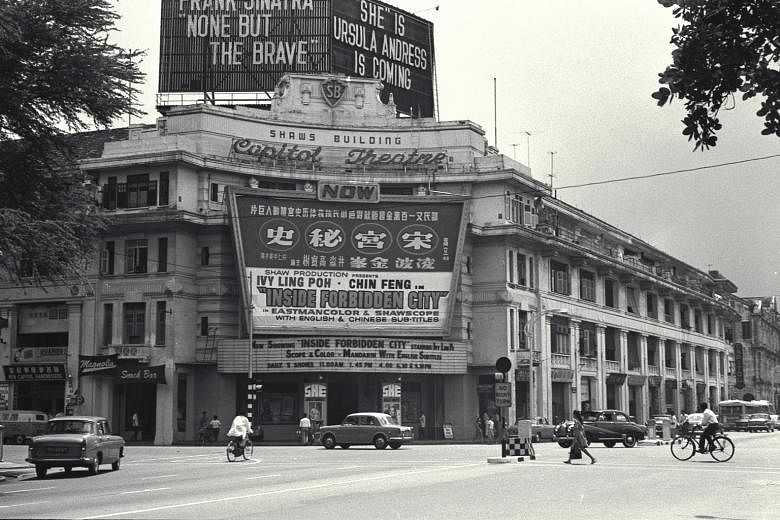As a rule we have to be content with the pleasures of contemplation.
- The Straits Times, Dec 2, 1908
The "pleasures" of contemplation was, of course, sardonic euphemism for boredom in Singapore, which The Straits Times described in 1904 as "not the liveliest place in the world so far as amusements are concerned".
The colonial quartet of theatre, balls, horse racing and cricket were the popular pastimes. Their function, noted The Straits Times on Sept 10, 1864, was to prevent "listless indolence" among the vanguards of the British Empire, young men who otherwise would have "grown prematurely old".
Taking its role as the island's arbiter of pleasure seriously, The Straits Times rigorously reviewed the rare tour by a theatre company.
-
1938
PRICE SLASHED
Cover price is radically cut to 5 cents in order to compete against the increasing appeal of the Tribune. The difcult decision pays off - circulation almost doubles from 8,000 to 15,000 in 1939, far outstripping the Tribune.
1939
 WORLD WAR II
WORLD WAR IIThe Straits Times reports on September 4 that Britain Is At War, with an editorial suggesting that the possibility of the conict reaching Singapore is remote: "At this distance from the scene of battle, with our defences perfected and Japanese participation on the side of Germany an extremely remote possibility, Malaya has little to fear."
Governor Sir Shenton Thomas appeals to Europeans to remain in Malaya instead of heading back to enlist in the army. The economy in Malaya has to be maintained in order for it to play the role of a "Dollar Fortress" in the war. Editorial staff who leave the Straits Times include Ivan Palmer who joins the Royal Australian Air Force and Athol Foster who enlists with the Royal New Zealand Air Force.
Journalist George Peet is seconded by the government to take on the role of Director of Information. The paper shrinks to 16 pages following the outbreak of the war, and is cut to 12 pages by 1941.
1941
 AIR RAID
AIR RAIDMany Straits Times staffers enroll with the Volunteers or civil defence, and the newspaper sponsors a war fund which raises more than $6 million (Malayan dollars).
A Japanese air raid in the early hours of December 8 takes Singapore by surprise. Attacks are also made on Pearl Harbor, south Thailand and Kota Baru. The Straits Times downplays the extent of casualties, reporting the "absolute calm of the local population".
War news during this period is pitched to avoid panic, with reports of serious incidents delayed or not published at all. News mostly consists of ofcial war communiques. The fall of Penang on December 18 is not publicised till two days later. Good news is played up, with articles bearing headlines such as Japan's Big Losses In Perak Fighting.
It was less exacting with local amateur performances, sometimes expounding on social graces while reporting these events.
"To give up a seat to a lady, although a stranger, is an act which is most pleasurable; but there are few gentlemen who like to be deprived of the felicity, which the act of yielding inspires," a report admonished on Nov 29, 1845.
By the early 1900s, Singapore had acquired something of an unsavoury reputation of being a haven for opium dens. In 1932, a rakish piece in The Sunday Times featured an article by a guest writer who chronicled his attempt to seek out the "dens of iniquity for which the city is notorious in Europe".
He was unable to find any but his quest led him to the "Opium Monopolies Department", where he was told he needed a licence to buy the narcotic. The point of the story seemed to be that Singapore's disrepute was grossly exaggerated.
The Sunday Times, on June 24, 1956, mused about a national sport that required little exertion.
"There are probably more good rumourists on this small plot of earth than anywhere else in the world," said the writer. "In a land of high humidity, it has strong advantage over other sports in that it does not make you perspire unless you happen to be the victim."
There is broad truth to this claim.
In the early days of the island's history as a British possession, there was a special place on the seafront for the dissemination of gossip.
"Heard the latest about old X? Well it seems…"
"I say, no really? Ha-ha-ha-ha!"
"Hi-ya!"
"Alamak!"
The venue for such exchanges was called Scandal Point, and was marked as such on early maps. Though it ceased to exist in 1851, it is believed to have been at the north-east corner of the Padang where the Singapore Recreation Club now stands.
People exchanged gossip while sitting on an embankment wall with a gun turret. The low wall was built to fortify Singapore's defences but was never used for its purpose.
Singapore's transformation from a backward "fishing village" to an entertainment hub throbbing with nightlife - without fostering a culture of reckless abandon or mindless revelry - can be traced in the pages of The Straits Times.




